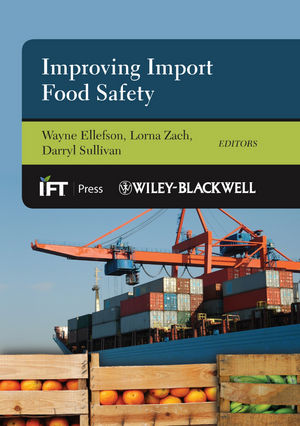Improving Food Safety Through Public Standards for Food Ingredients

Recent food safety scares have prompted a drop in public confidence in our nation’s food supply. Foods are not drugs, but an existing lack of oversight on food products provides insight into ways we can enhance food safety. The 1906 Pure Food and Drugs Act focused primarily on adulteration and misbranding. It also called for federal inspection of meat products and plants, and forbade the manufacture of poisonous foods and patent medicines. The Act’s parentage can be traced to social activist authors, such as Upton Sinclair (whose 1906 novel, The Jungle, created wide public awareness about conditions in the meat packing industry) and federal researchers such as Harvey Wiley (the first FDA commissioner) as well as then-President Theodore Roosevelt. The 1906 Act paved the way for the creation of the Food and Drug Administration.
The 1906 Act was largely replaced by the much more comprehensive 1938 Federal Food, Drug and Cosmetic Act (FFDCA), which, with periodic refinements, is still operative today. The FFDCA gives authority to the FDA to oversee the safety of foods (and food ingredients), drugs and cosmetics.
But the regulatory landscape for food and food ingredients is much different than it is for drugs. There was no recognized food ingredient compendium at the time the FFDCA was enacted, so when early 20th century law specified conditions under which food would be considered adulterated and misbranded, it was done generically and not in reference to a food ingredient compendium. In 1958, the National Academy of Sciences created a food ingredient compendium for the United States, the Food Chemicals Codex (FCC). Unfortunately, the FCC was never broadly written into U.S. law as was done for the United States Pharmacopeia (USP) and the National Formulary (NF) for drugs. Rather, it was incorporated only sporadically into FDA regulations to approve certain specific food additives.
The Next Step
Where does this leave us today? In the U.S., pharmaceuticals are subject to strict premarket and postmarket requirements for which manufacturers must document quality, safety and efficacy. In contrast, the burden of identifying foods and food ingredients that may compromise public health often falls on the FDA, which lacks both the funding and resources for such a monumental task. By not demanding protection for foods similar to those that currently exist for drugs, we risk jeopardizing the quality of our food supply.
The current threat to the American food supply is best exemplified by a number of recent incidents of harmful economic adulteration, or the substitution of lower cost (but often dangerous) materials into foods and drugs for increased profit. These instances are especially problematic because they echo similar cases of harmful adulteration that occurred in the early 20th century.
In the case of last year’s melamine episode, manufacturers intentionally adulterated wheat gluten with melamine, an industrial chemical used in plastic resins, fabrics, glues and fertilizers. Poor quality wheat gluten was deliberately spiked with melamine to give higher analytical readings for nitrogen and thus falsely elevate the reported protein content. One solution to the melamine problem is to replace the current non-specific Kjeldahl nitrogen assay with a more specific analytical methodology that would more accurately measure protein content and not be “fooled” by adulterants like melamine. Fortunately for human health, the adulterated wheat gluten only ended up in cat and dog foods, where it regrettably caused the deaths of companion animals. However, there is no reason to assume that similar adulteration could not happen in foods intended for human consumption.
The major challenge in identifying food adulterants is that the industry goes to great lengths to ensure that foods contain the ingredients and chemicals that should be present, but does not readily account for the risk of unknown or unexpected substances, which often account for accidental contamination or intentional adulteration. Current good manufacturing practices (GMPs) for food focuses on cleanliness and absence of filth, rather than on testing the actual ingredients that make up the food. Testing food ingredients against publicly available monographs, such as those in the FCC, would be an effective step in responding to new adulterants because the assays can be rapidly developed or modified to account for new contaminants. Ethical manufacturers do their best to control the quality of the food ingredients going into their products by working closely with suppliers, but there is no legal requirement to conduct food ingredient identification tests before use.
A logical first step would be to establish legal recognition for the FCC under the FFDCA with respect to food ingredients in the United States, similar to that which currently exists for the USP-NF with respect to drugs and drug ingredients. Reliance on public standards developed by USP for drug quality has proven to be extremely useful and durable over the past century. As mentioned above, USP took over the management of the FCC from the National Academy of Science Institute of Medicine in August of 2006, with the goal of supplying similar standards for food ingredients that it currently supplies for drugs. The general concepts of quality and purity, and the requirement to follow USP specifications and analytical methods to prevent and/or detect contamination and adulteration that are embodied in law in relation to drugs, could be extended to food ingredients through recognition of the FCC. Additionally, current GMPs for food could be strengthened to require both suppliers and manufacturers to carry out testing to ensure purity of the final foods, as well as the food ingredients.
Mandatory testing to public standards is part of the solution, but there are other risk-reduction strategies as well. Reliance on credible, non-governmental, third-party verification programs that include on-site inspections, audits and adherence to analytical methods, reference standards and monograph specifications can help assure the quality of food ingredients without consuming limited FDA resources.
The challenge of securing our food supply is daunting, as the U.S. market contains an ever-growing range of food products comprising a multitude of ingredients that often originate from outside the U.S. Enhancing legal recognition of food ingredient standards would be a great start, but other changes and improvements could no doubt be uncovered through dialogue with the many stakeholders that contribute to the global food supply chain. The melamine episode could just as easily have occurred in food intended for humans, and we cannot afford to wait for a contamination that has far more devastating consequences. Public confidence and public health are both on the line.
Jim Griffiths is Vice President of Food and Dietary Supplements Standards, U.S. Pharmacopeial Convention, Rockville, MD.
Darrell Abernethy is Chief Science Officer, U.S. Pharmacopeial Convention, Rockville, MD.
Looking for a reprint of this article?
From high-res PDFs to custom plaques, order your copy today!








